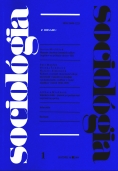Meranie chudoby územných celkov (regiónov) na príklade okresov SR
The Measurement of Poverty in the Regions of the Slovak Republic
Author(s): Anton MichálekSubject(s): Social Sciences
Published by: Sociologický ústav - Slovenská akadémia vied
Keywords: Poverty; synthetic indicator of poverty; regional disparities; territorial perspective
Summary/Abstract: The Measurement of Poverty in the Regions of the Slovak Republic. Poverty is a grave social phenomenon which is intricately interconnected with and significantly effects different sides of human life and society. Poverty is a complex and multidimensional problem, which has not only a socio-structural dimension but also a socio-spatial one. That is why the central aim of this contribution is to conceptualise poverty in relation to space, to measure the level of poverty in selected territorial units (Slovak districts) and to identify districts with the highest level of poverty. An essential condition for the elimination of poverty is the knowledge of its spatial aspects, especially of its concentration, extent and differentiation. We measured the level of poverty in 79 districts in Slovakia (NUTS IV) using the conception of multiply deprivation based on the measurement of deprivations of important elements in human life. (Townsend, P., 1987) We analysed poverty by using relevant statistical data of seven significant indicators that determine or induce poverty (the lack of employment or education, a large and/or single-parent family, an overcrowded apartment, the lack of a bathroom and of a car). The quantification of deprivation level by a point evaluation and by measuring the indicators mentioned above became the evaluative means to determine the level of poverty in districts. On the basis of a quantitative evaluation of these indicators we gained a synthetic indicator of poverty. It presents a numeric expression of the poverty level in Slovak districts. The values obtained from the synthetic indicator differ considerably from each other, corresponding to significant regional disparities in the poverty level. On the grounds of this inequality, we identified the districts that are most affected by poverty. In the stricter sense, there are 16 districts with a high level of poverty, but in the broader sense, there are 21 more. From the territorial perspective, the majority of these districts are located in the south and in the east of Slovakia. These districts are characterised by their low level of demographic, economic, social and infrastructural potential, and by a lack of modern and fast communications and thus difficult traffic accessibility. The information gained concerning this unequal poverty level provides both a cognitive and explicative significance, i.e. it is an important basis to use in searching for solutions and programs aimed at the gradual elimination of poverty.
Journal: Sociológia - Slovak Sociological Review
- Issue Year: 2004
- Issue No: 1
- Page Range: 7-30
- Page Count: 24
- Language: Slovak

